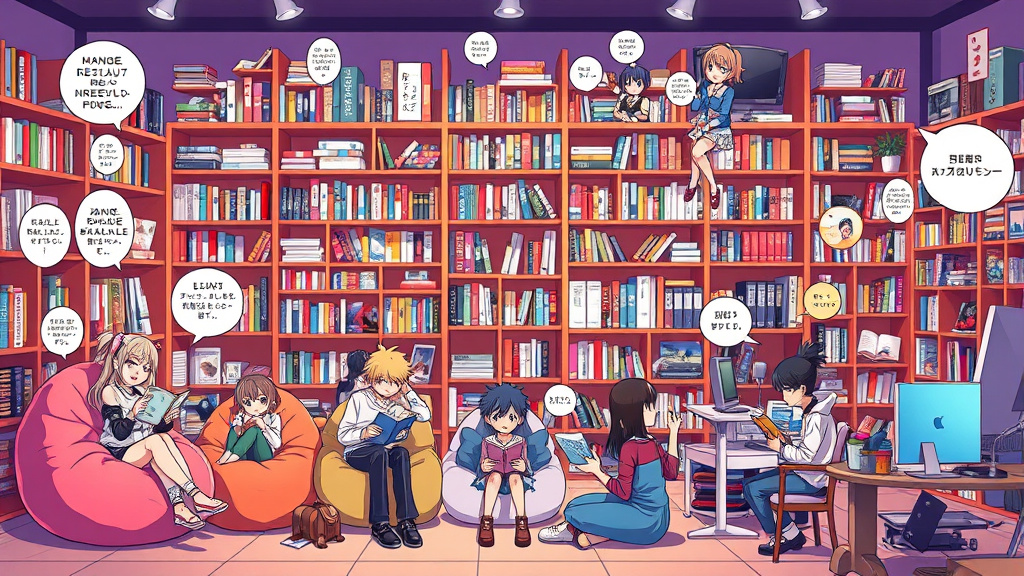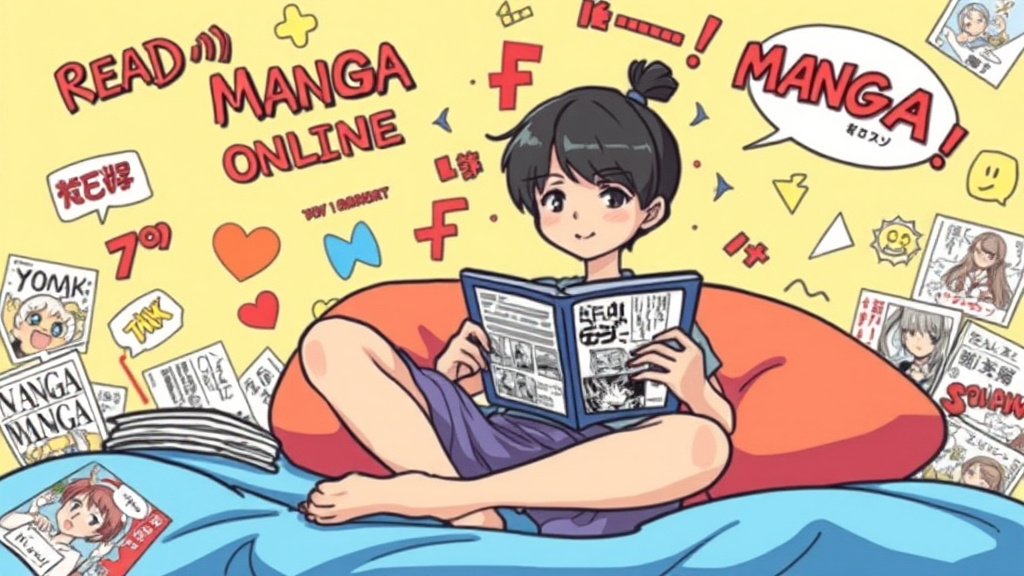In recent years, the manga industry has seen an intriguing new trend gaining momentum—up manga. This emerging genre, with its distinctive narrative style and artistic flair, has started to carve out a significant niche among manga enthusiasts. The phrase up manga refers to a specific style or thematic approach that has generated buzz due to its unique storytelling, innovative visuals, and the cultural conversations it sparks. As the genre continues to expand, understanding what makes up manga a noteworthy phenomenon in the manga landscape becomes essential for enthusiasts and newcomers alike.
The Rising Popularity of Up Manga
The growing popularity of up manga can be attributed to its ability to resonate with diverse audiences across the globe. Unlike traditional manga genres, which often focus on action, romance, or fantasy, up manga combines elements of emotional depth, experimental storytelling, and, occasionally, a touch of social commentary. This versatility appeals to readers seeking fresh perspectives on familiar themes, inspiring a wave of curiosity and enthusiasm that fuels its rise within the broader manga culture.
Furthermore, the accessibility of digital platforms has played a crucial role in accelerating the dissemination of up manga. Webtoon sites and manga apps have made it easier than ever for fans to discover and share titles in this genre, fostering international communities that discuss, critique, and celebrate up manga. This interconnectedness allows up manga creators to reach mass audiences quickly, contributing to its swift growth in popularity. The genre’s ability to adapt to different tastes and preferences is a testament to its dynamic nature, inviting readers to explore new narratives and artistic styles in unprecedented ways.
 Hình minh họa: up manga – websites to read mangas
Hình minh họa: up manga – websites to read mangasUp Manga: A Unique Genre Exploration
At its core, up manga is an intriguing blend of innovation and tradition—an exploration of unconventional storytelling methods coupled with artistic experimentation. This genre often challenges the norms established by mainstream manga, debuting narratives that push boundaries both visually and thematically. For instance, some up manga titles feature nonlinear storytelling, metafictional elements, or surreal imagery that demand a more active engagement from the reader, elevating the manga experience from passive entertainment to immersive artistry.
What sets up manga apart is its willingness to embrace ambiguity and complexity. While most manga adhere to familiar tropes, up manga creators tend to experiment with character development and plot structure, resulting in stories that often leave interpretations open-ended. This approach invites readers to delve deeper into the meaning and symbolism behind each work, fostering a more personal connection. Such exploration reflects a broader cultural shift toward appreciating nuanced narratives that challenge preconceptions, and up manga embodies this shift beautifully.

Key Characteristics of Up Manga: What Sets It Apart?
One defining trait of up manga is its distinctive artistic style, which often combines bold visuals with innovative panel arrangements. Artists in this genre tend to experiment with layout, color schemes, and expressive character designs that evoke strong emotional responses. This visual dynamism complements the unconventional storytelling, creating a harmonious blend that keeps readers engaged and eager to interpret the imagery.
Additionally, up manga stands out due to its thematic daringness. Many titles explore taboo subjects, existential questions, or societal critiques that are underrepresented in mainstream manga. This boldness allows up manga to serve as a reflective mirror of contemporary issues, resonating with readers who seek more than just escapism. The genre also emphasizes character-driven narratives, often delving into characters’ internal struggles and moral ambiguities, which adds layers of psychological depth rarely seen in traditional manga.
Notable Up Manga Titles and Their Impact
Several notable titles within the up manga genre have significantly impacted both readers and the manga industry as a whole. Titles like “Eclipse of the Mind” and “Fractured Realities” are celebrated for their groundbreaking storytelling and artistic innovation. These works are praised for challenging genres’ conventions, compelling audiences to rethink what manga can accomplish as a form of art and cultural expression.
The influence of these titles extends beyond entertainment; they have sparked academic discussions on manga’s potential as a medium for social critique and philosophical exploration. Such titles have inspired a new wave of creators eager to push boundaries, fostering a community driven by experimentation and creativity. Their success exemplifies how up manga can be both critically acclaimed and commercially successful, further ensuring its place within contemporary manga culture.
The Artistic Style and Visual Storytelling in Up Manga
Visual storytelling in up manga often involves experimental techniques that break free from traditional manga paneling. Artists may utilize asymmetrical layouts, eclectic color palettes, and mixed media elements to evoke mood and atmosphere more powerfully. This artistic approach allows creators to communicate complex themes visually, enhancing narrative depth and encouraging viewers to interpret the works on multiple levels.
The artistry in up manga also emphasizes symbolic and surreal visual motifs. Such imagery often serves as metaphors for internal struggles, societal issues, or existential dilemmas faced by characters. This layered visual language enriches the reading experience, prompting viewers to decode visual clues and derive personal insights. The genre’s mastery of combining innovative art and storytelling exemplifies its potential as a form of high art within the manga universe.
Up Manga and Its Target Audience: Who Is Reading It?
The core audience for up manga is a diverse group of readers who crave intellectual stimulation, artistic innovation, and unconventional narratives. These readers often include college students, manga aficionados interested in experimental art forms, and those engaged in cultural critique. The genre’s appeal to a wide demographic underscores its versatility—resonating with both younger audiences seeking relatability and older readers appreciating thematic complexity.
Interestingly, up manga also attracts international audiences eager to explore Japanese manga’s evolving landscape. Digital platforms facilitate this cross-cultural exchange, exposing readers from different backgrounds to stories that reflect a broad spectrum of human experiences. As a result, up manga has become a cultural bridge, fostering global conversations about art, identity, and society through its unique narratives.
The Cultural Significance of Up Manga
Cultural significance emerges as a key aspect of up manga because it often explores themes relevant to contemporary societal issues—identity, mental health, technological advancement, and more. By diving into sensitive or underrepresented topics, up manga serves as a mirror held up to society, sparking conversations and increasing awareness about complex social dynamics.
Furthermore, up manga reflects the evolving nature of Japanese cultural identity. It challenges traditional notions of storytelling and art, emphasizing diversity and inclusivity. In doing so, the genre contributes to a broader understanding of manga as a serious art form capable of confronting societal taboos and inspiring change. Its cultural impact underscores the importance of artistic innovation in fostering cultural dialogue and social progress.
Up Manga in the Global Manga Market: Trends and Growth
Internationally, up manga is experiencing a noticeable surge, driven by increased accessibility and a global appetite for artistic experimentation. Platforms such as Webtoon, Tapas, and others have catalyzed its dissemination, allowing creators to reach an audience beyond Japan’s borders. The genre’s global appeal is partly due to its universality—its themes often resonate across cultures, and its visual style appeals to a wide demographic.
Market trends indicate that up manga is not just a passing fad but a burgeoning segment expected to continue growing. As readers seek more meaningful and visually innovative content, publishers are recognizing the commercial potential of this genre. This expansion signals a shift toward a more diverse and inclusive manga industry that celebrates creative experimentation and cultural exchange on an international stage.
Criticisms and Controversies Surrounding Up Manga
Despite its creative achievements, up manga is not without criticism. Some detractors argue that its experimental nature can sacrifice coherence for style, leading to narratives that are overly complex or inaccessible. Others critique its occasional boldness in addressing taboo subjects, raising concerns about appropriateness or cultural insensitivity. These debates highlight ongoing tensions between artistic freedom and societal norms.
Controversies have also emerged around the genre’s representation of certain themes or characters. Some critics question whether up manga crosses boundaries into irresponsibility or perpetuates harmful stereotypes. Nonetheless, its defenders argue that the genre’s willingness to confront uncomfortable truths is vital for societal growth. Such debates underscore the importance of ongoing dialogue about the role of art in society and the boundaries of creative expression.
The Future of Up Manga: Predictions and Potential Developments
Looking ahead, the future of up manga seems promising but will likely involve further experimentation and diversification. As technology advances—with virtual reality, augmented reality, and enhanced digital art tools—the genre could evolve into even more immersive storytelling formats. This technological integration would deepen emotional engagement and broaden artistic possibilities, making up manga more dynamic and accessible.
Moreover, with increasing global interest, up manga is poised to influence mainstream manga and other media forms. This cross-pollination can lead to innovative hybrid genres combining visual storytelling, interactive elements, and multimedia narratives. As societal dialogues about identity, technology, and social issues intensify, up manga will probably remain at the forefront of cultural transformation—pushing boundaries and shaping the future of manga as a serious, globally recognized art form.
Conclusion
In summary, up manga is a fascinating genre that exemplifies creative audacity, artistic innovation, and cultural significance within the manga industry. Its rise in popularity is driven by its unique narratives, bold visuals, and capacity to resonate across diverse audiences worldwide. As it continues to evolve through technological advancements and global influence, up manga promises to further challenge conventions, foster cultural conversations, and redefine what manga can achieve as an art form. Its future remains bright, driven by a passionate community dedicated to exploring new horizons in storytelling and artistic expression.



